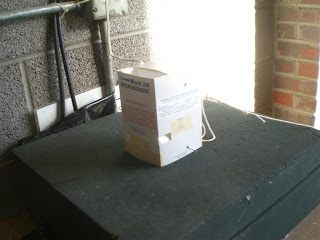The Denver Winds Aloft (or, “Going on a Geek fieldtrip”)
It was about the 2nd week of Dispatch class at Jeppesen when instructor Steve B took us thru the winds aloft section of our training. Winds aloft are gathered in several ways, primarily by weather balloons with their attached data collectors (radiosonde’s), launched 2x a day around the world, with the collected global data broadcasted at 00Z and 12Z. Homework problems had us examining this collected data and determining what the wind direction, speed and temperature aloft would be on a flight from STL-MEM-MSY at FL330. This essential data would be a constant variable as we flight planned across the nation on our Boeing 737-800’s. Wind factors affect the fuel burn and time enroute on these flight plans. Get ‘em wrong, you get your plan wrong, you fail and life snowballs downward from that point on. They’re pretty important.
Being Meteorology major, I also studied these lofty gusts back in my Kean College (now Kean University) days. About 100 balloons are launched across the USA 2x per day, about 500 around the world, on the same schedule.
Today, with the ink still wet on my Temporary Airman Certificate, I found the launch site for the Denver NWS weather balloon launch site. It’s located on the grounds of the former Stapleton Airport in Denver, near the corner of Havana and Smith, on the grounds of the “Urban Farm”.
The building is easy to spot. It’s a one story garage type building with a large rollup door (tall enough to fit a 6’ balloon thru) and what appears to be a bathysphere on the roof. I knocked and introduced myself to Charles, the NWS guy at the helm there.
“I don’t get to many visitors here. Want to launch the balloon?”
“HECK YES I DO!!!”
After an explanation and examination of the balloon, the radiosonde and the radiosonde’s parachute, I was told to stand “about over there” and “just let ‘er go”. I guess I had the thought that I would “let ‘er go” on the command of the global balloon launch center (GBLC), but that didn’t exactly happen. After a few seconds, the balloon was already well on her way aloft. We retreated inside and watched as the radar unit, located on the roof in the bathysphere-type dome, tracked the balloon and displayed its data. Charles explained that the total reporting time of each balloon is about 100 minutes, at which point the balloon is at the 8mb level of the atmosphere. At this point, the balloon would pop and the radiosonde would parachute to earth. Mailing instructions are on the side of the radiosonde. I had always heard that if you mail a radiosonde back after filling in the attached card that you got $5., but Charles told me that didn’t happen.
Here are MY winds aloft !!!!
FDUW01 KWBC 010157
DATA BASED ON 010000Z
VALID 010600Z FOR USE 0500-0900Z. TEMPS NEG ABV 24000
FT 6000 9000 12000 18000 24000 30000 34000
DEN 2624+02 2732-03 2842-18 2629-28 264245 274155 265565
Denver NWS Balloon launch building
Charles with the balloon. Note the orange radiosonde parachute
DF launching the weather balloon
within seconds, its aloft and away
Charles monitoring the data from the radiosonde
The radiosondes transmission data
A radiosonde









Great post. Keep this site going!
ReplyDelete